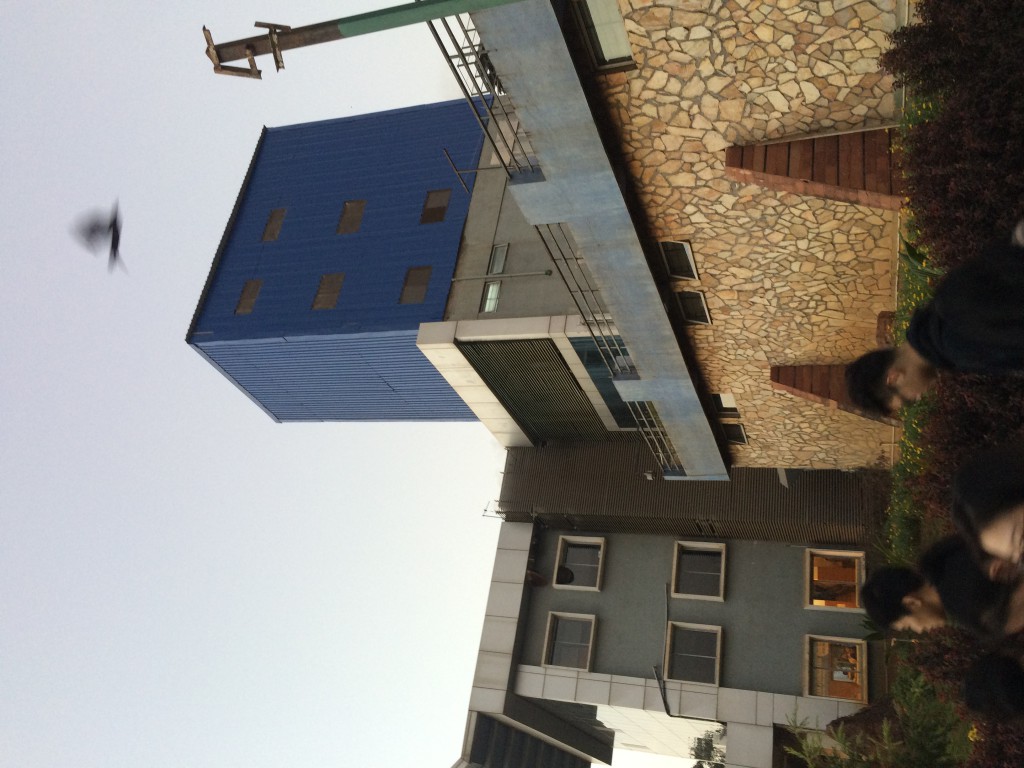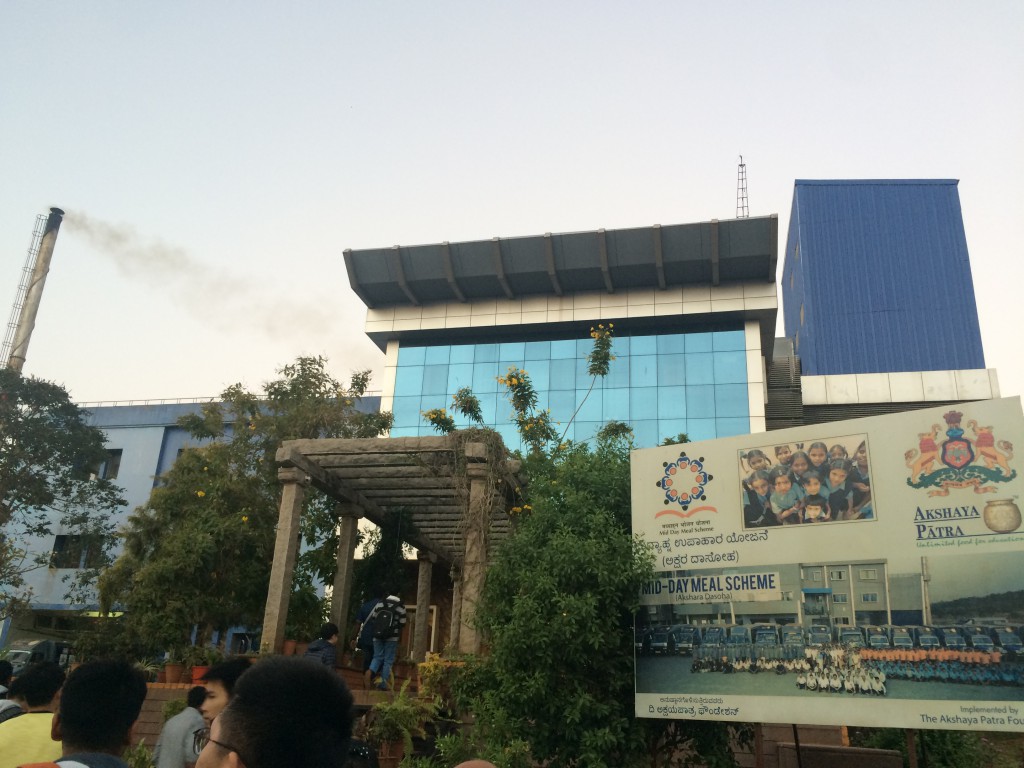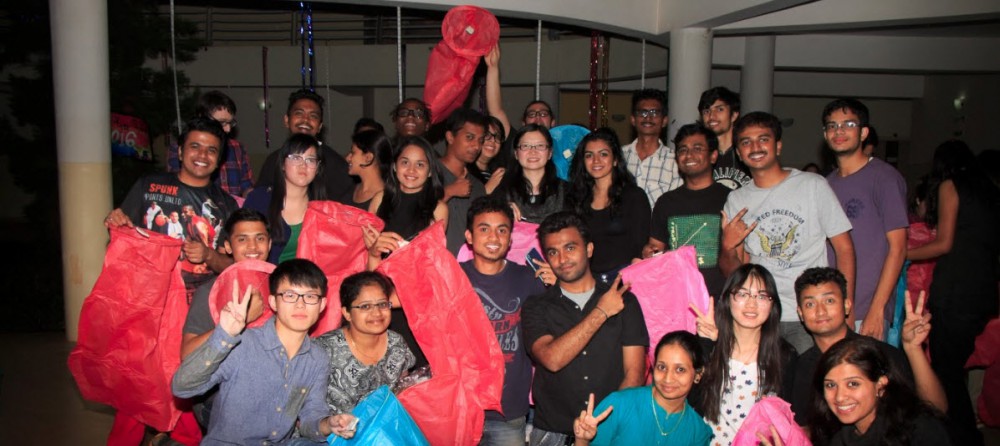The first day of this program, students were split into groups and told to find problems around campus and to brainstorm solutions. This problem-solving mindset is something that I have been trying to hold onto throughout this program in order to learn more and potentially make a difference. Today the Entrepreneur students visited the Akshay Patra factory, the largest kitchen in India. My background and work experience has been in Supply Chain, so visiting this factory was something I have been looking forward to. Akshay Patra produces 1.6 million meals each day to feed children in public schools around India. In total, there are 26 kitchens throughout India that allow Akshay Patra to meet the needs of all the children.
Akshay Pakra has a three story factory. The top floor is used to clean rice, and then distribute it out to be cooked. The second floor is where the meals are prepared. There is rice served at every meal and sambar is also frequently served. The bottom floor is where the food is packaged up to be delivered to the schools. Akshay Patra has done an incredible job lowering its operating costs. Each meal costs $0.16, and $30 per year. While these costs are low, and many meals are produced daily, I observed some opportunities for improvement.
The greatest opportunity for improvements that I noticed was regarding manual labor. On the third floor, the rice was cleaned by hand in small buckets. There were three people using a constant stream of water to rinse and rub the shells off of the rice, and then pouring the water into a trough that would get rid of it. On the second floor, where the food was cooked, there were huge machines and equipment used to prepare a lot of food in a small amount of time. I noticed that there was food waste from when food would be moved between cleaning, cooking, and packaging. Also, once the food was made ad ready for packaging, an employee would scoop the rice out of the pot and into a trolley. There was a lot of rice remaining in the pot. The trolley full of rice then had to be wheeled across the floor to the vents to feed it down to the bottom floor. The food packaging was no standardized between containers. There was an employee who would syphon out rice until the containers were full, and then without stopping the flow of rice, push another container into place to be filled.
My recommendation for limiting food waste, cutting labor costs, and ultimately being more efficient are to buy or develop a device to scrape the sides of the pots, cook food closer to the vents to reduce time between batches, and to invest in an assembly line belt so that the distribution of rice will be more consistent between containers. 

